SLEEP, MY FIGS
Optimizing Winter for a Fig Plant
For those of us who grow figs in cold climates, where winter lows reliably plummet below 10 degrees Fahrenheit, this time of year brings some nervous expectation. You want the buds to pop out and start growing, but not too, too soon.

Awakening!
Except for maritime climates, such as in the Pacific Northwest, where winters are what I term “coldish” rather than “cold,” figs need some sort of protection in truly cold winter climates. The challenge in maritime climates is using variety choice, pruning, and site selection to get fruit to ripen in the relatively cool summers. In these climates fig buds gradually unfold usually in synch with the gradual warming weather in spring.
Not so for protected figs in truly cold winter climates, whether plants are in a pot or in the ground, wrapped or buried. For directions here, allow me to excerpt my recent book, Growing Figs in Cold Climates:
Being subtropical, fig is anxious to grow when in some way—mostly from temperature and soil moisture— it feels winter is ending. Try to keep it asleep with minimal water and cold temperatures as long as possible. Otherwise, the plants tend to awaken before it’s warm enough for them to go outside.
In the ideal world, the plant is kept dormant until outdoor temperatures remain reliably in the high 20s (-2 to -3°C), at which point the plant gets moved outdoors, where its leaves unfold naturally in synch with the increasingly warm temperatures of spring.
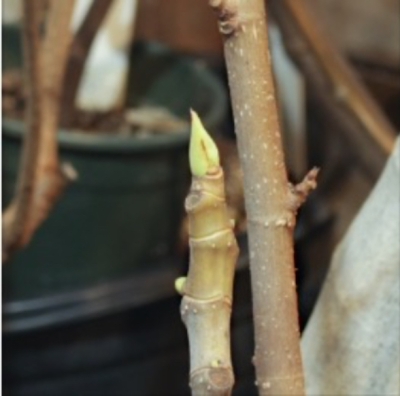
Dormant fig stem
In the real world, fig plants often sprout new leaves while still under protection from cold. New leaves and attendant growth that sprout indoors are too succulent to face the great outdoors even when temperatures turn reliably warm. The overanxious plant will have to be very gradually acclimated—hardened off, just like vegetable seedlings—to bright sunlight, cooler and fluctuating temperatures, and wind. Unless the prematurely awakened plant can bask in abundant light, as in a sunroom or greenhouse, its new growth is not likely set fruit, at least not until it gets moved to better light conditions.
Harden the sprouting plant off by initially moving it outside to a spot with dappled sunlight and shelter from wind. Be ready to whisk it indoors, temporarily, if very cold or windy weather threatens. Gradually move the plant to a location with greater and greater exposure to the elements.
Another option is to just move the plant outdoors to its summer location, and accept a certain amount of die-back of that premature growth. That could delay or diminish the crop but, except if temperatures turn very cold, will probably not kill the plant. You also could whisk the plant through a doorway into your home or garage to provide a day or two of shelter until outdoor conditions settle again.
What If She Wakes Up
Around here, and in many cold winter regions, it’s still too early to move an overeager, awakened plant outdoors whether you prune it or let any premature shoots die back of their own accord. A fig plant still needs protection from cold.
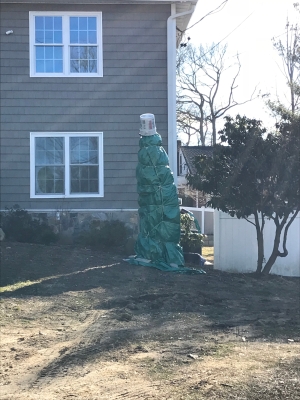
Fig swaddled against winter cold
A reader recently wrote me that her fig, although in her coldish (temperatures in the 50s), dark basement, was sprouting. Growth under those poor conditions uses up some of the plant’s energy reserves. Since she had nowhere to move the plant where it could be kept colder or in bright light, I suggested putting on the brakes to slow further growth by keeping soil on the dry side — just moist enough so that stems don’t shrivel. Once warm enough weather arrives, the plant could be moved outdoors. Any succulent new shoots will probably burn off from sun, wind and/or cold, but the plant should have enough reserves for new growth and even fruits.
My potted figs winter in my basement, where temperatures are in the low 40s, or in my cooler, where the temperature is steadily around 39 degrees Fahrenheit. I water them once, perhaps twice each winter. They stay reliably dormant until sometime in April (here in Hardiness Zone 5), at which point I move them outdoors to a sunny spot close enough to my garage door so they can be moved inside should a freak frost threaten.
For plants protected and outdoors, peak inside their winter home, whether in or on the ground, or swaddled, and gradually undo their protection if you see signs of awakening.
As long as a fig plant is thoroughly asleep, with no sign of buds swelling, it should be fine down to temperatures in the 20s. Tolerance to freezing temperatures diminishes as a plant wakes up.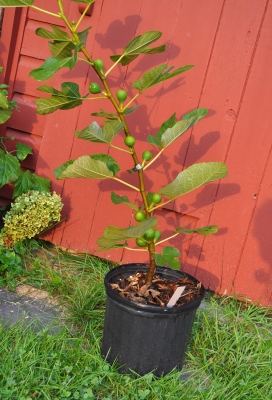
A Perfect Segue from Winter to Spring
The four figs — San Piero, Brown Turkey, Excel, and Rabbi Samuel — planted right in the ground in my greenhouse experience a perfect awakening each spring, probably even more consistently perfect than in their native home in the Middle East.
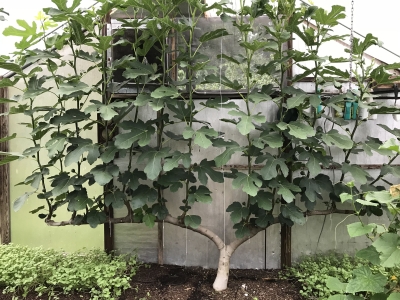
Greenhouse fig trained as espalier
My greenhouse trees never experience a late frost or freeze because a heater keeps temperatures above 37 degrees Fahrenheit. And once they begin growth, they have plenty of light. Below ground, roots find water from the drip irrigation system used to water other plants in the greenhouse, or, in summer, as they forage beyond the reaches of the greenhouse.
A greenhouse just for figs would seem to be an obscene extravagance. It would be! But the figs are dormant and leafless all winter, during which time lettuce, mâche, arugula, mustard greens, Swiss chard. evergreen onions, kale, cabbage, and celery grow at their feet, marching in a steady progression to maturity to the kitchen.
And today I’m sowing pepper, eggplant, onion, celery, and leek seeds, the seedlings of which will spend weeks in their toddler stages in the greenhouse before being planted out in the garden. Other seedlings will follow, all of which will be raised on the greenhouse bench.
As the figs begin to sprout, the greenhouse soil will have warmed enough to plant a couple of ginger plants, perhaps even some cucumbers for an early harvest.
Then, in late summer, two months, or more, of fresh figs will provide almost daily harvest.
(My book Growing Figs in Cold Climates, also covering varieties, pruning, harvest, and more, is available from the usual sources or directly from me, signed, at www.leereich.com/books.)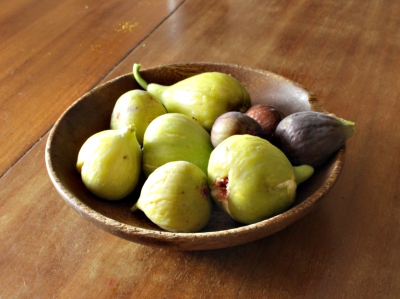

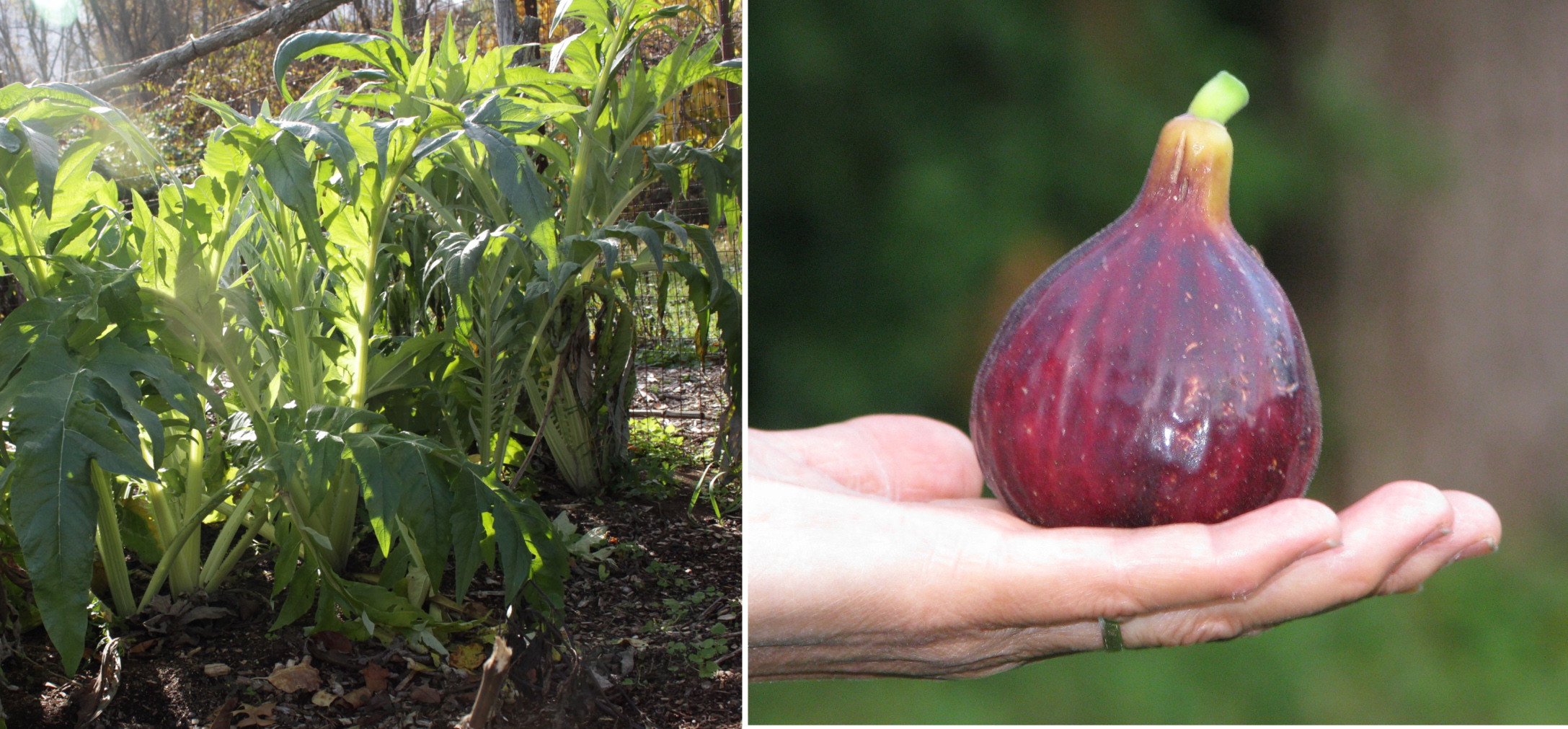

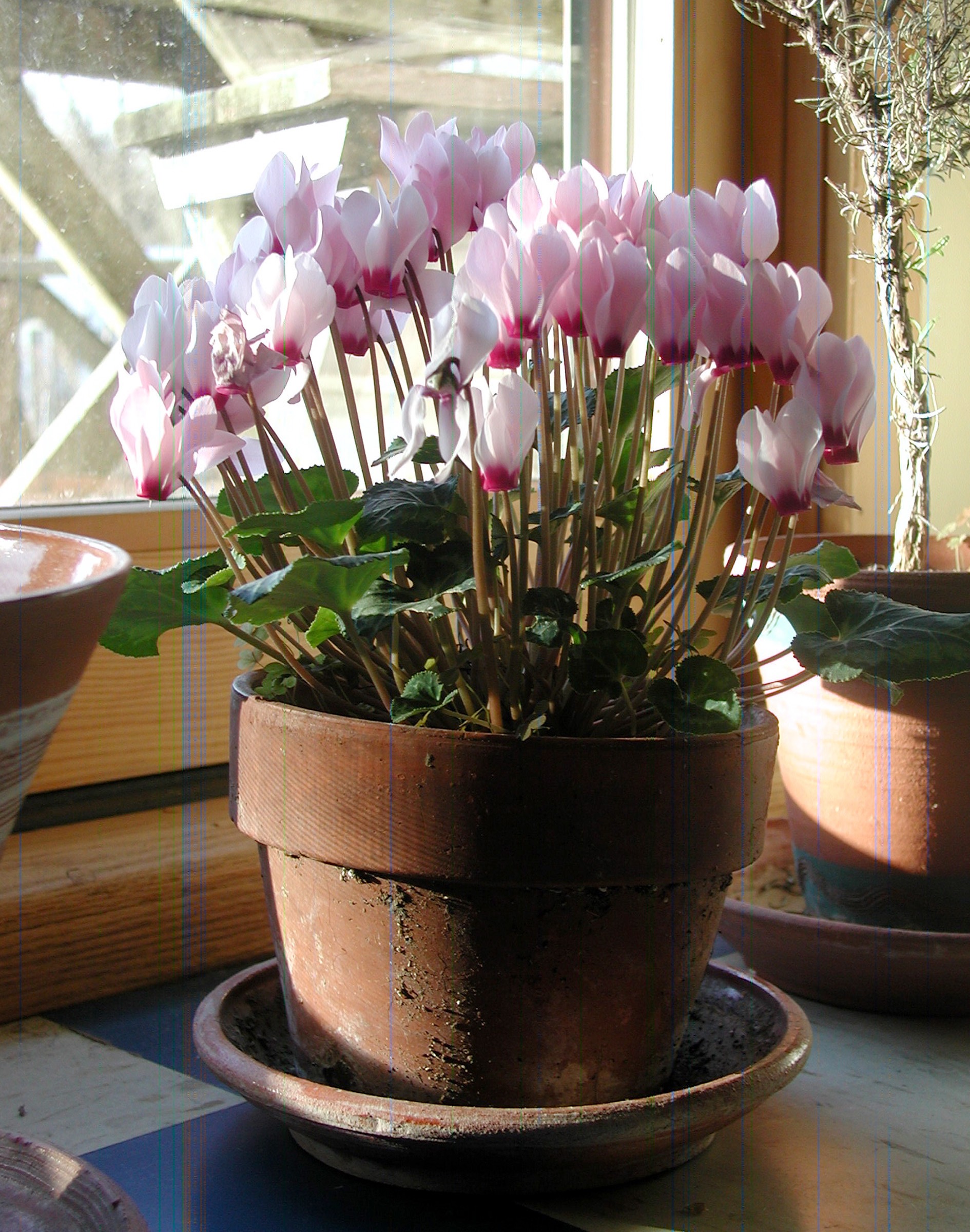
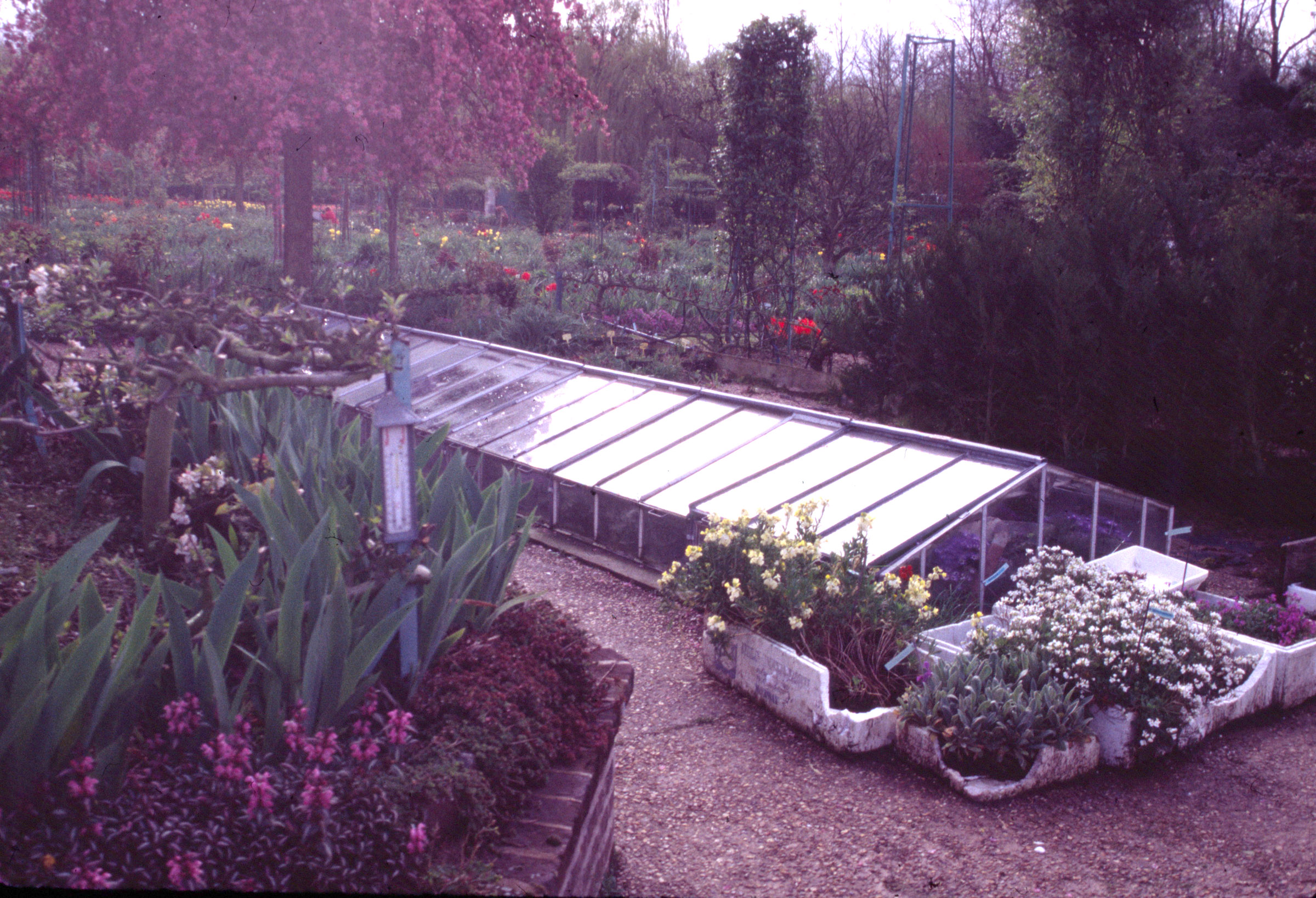
Reading this over I am sad. I think I may have killed my Brown Turkey over the winter. It is in a large pot (too big to move indoors), so I swaddled it in a large contractor bag, stuffed with Timothy hay. I didn’t water it and it looks pretty sad—branches dehydrated. :-(. My husband is building me a greenhouse and if it lived, I will take it out of the pot and plant it in the ground as you show…… Fingers crossed my fig lived.
Don’t give up hope. Figs are very tolerant of abuse.
HI..
There is a fig that was planted around 50 years ago at old house in Seattle. The main tree was huge. The offshoot around 20 feet tall… Neither had wintering issues.. Green with red inside fruit. Have any idea what they were?
If I get young starts from it will they be delicate?
Family were Italian… From old country we bought the house from.
Thank you.
There are so many varieties of figs that might match that description. I would think that just about any fig would get through a Seattle winter just fine.
Young starts will be exactly like the mother plant, although might be slightly less cod tolerant when very young.
Does the fruit taste good? Very good” Very, very good?
Very likely Ischia!